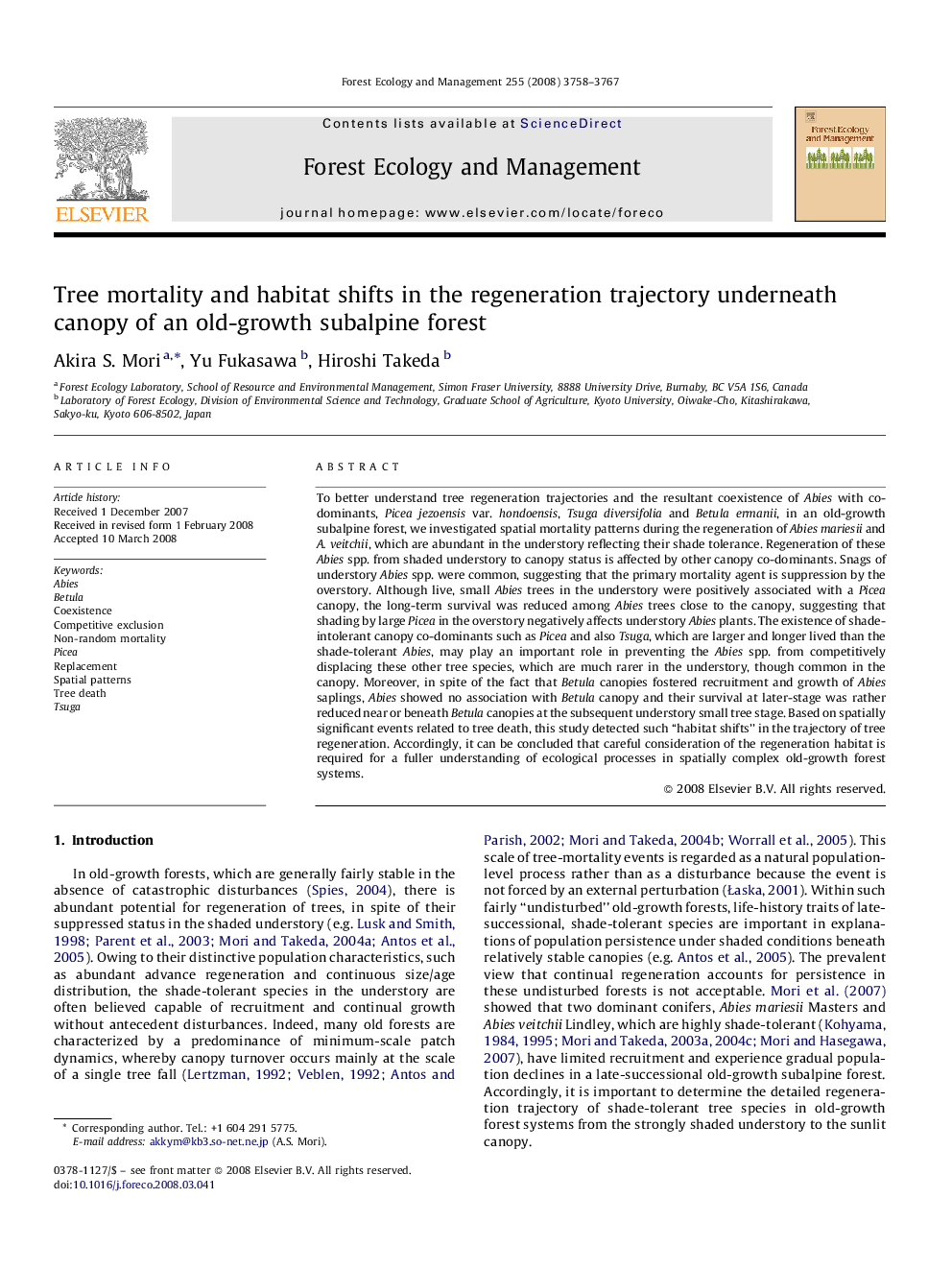| Article ID | Journal | Published Year | Pages | File Type |
|---|---|---|---|---|
| 89321 | Forest Ecology and Management | 2008 | 10 Pages |
To better understand tree regeneration trajectories and the resultant coexistence of Abies with co-dominants, Picea jezoensis var. hondoensis, Tsuga diversifolia and Betula ermanii, in an old-growth subalpine forest, we investigated spatial mortality patterns during the regeneration of Abies mariesii and A. veitchii, which are abundant in the understory reflecting their shade tolerance. Regeneration of these Abies spp. from shaded understory to canopy status is affected by other canopy co-dominants. Snags of understory Abies spp. were common, suggesting that the primary mortality agent is suppression by the overstory. Although live, small Abies trees in the understory were positively associated with a Picea canopy, the long-term survival was reduced among Abies trees close to the canopy, suggesting that shading by large Picea in the overstory negatively affects understory Abies plants. The existence of shade-intolerant canopy co-dominants such as Picea and also Tsuga, which are larger and longer lived than the shade-tolerant Abies, may play an important role in preventing the Abies spp. from competitively displacing these other tree species, which are much rarer in the understory, though common in the canopy. Moreover, in spite of the fact that Betula canopies fostered recruitment and growth of Abies saplings, Abies showed no association with Betula canopy and their survival at later-stage was rather reduced near or beneath Betula canopies at the subsequent understory small tree stage. Based on spatially significant events related to tree death, this study detected such “habitat shifts” in the trajectory of tree regeneration. Accordingly, it can be concluded that careful consideration of the regeneration habitat is required for a fuller understanding of ecological processes in spatially complex old-growth forest systems.
